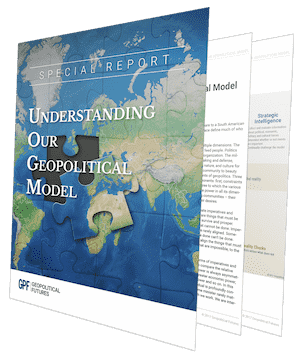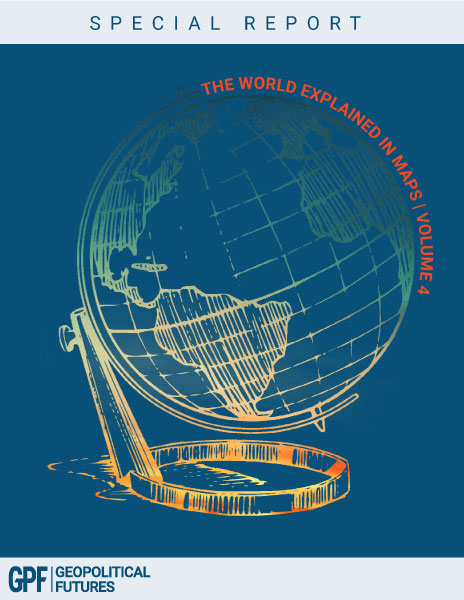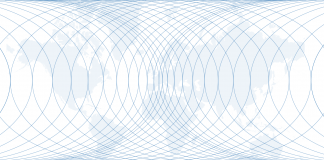There are two analytic principles worth repeating before delving into the raft of tariffs the Trump administration issued last week. The first is that we have entered into an unanchored world order, a state in which one geopolitical era transitions to the next. All things that were certain in the past have become uncertain – the storm before the calm that I applied to U.S. politics.
The second is the distinction between geopolitical imperatives and geopolitical engineering. Geopolitical imperatives force nations to act in certain (and predictable) ways. Geopolitical engineering is how nations manage their geopolitical imperatives, a process that requires balancing a nation’s domestic politics between those who welcome the new reality and those who oppose it. The outcome is predictable, even if the process by which it emerges is less so, apart from the outcome dictated by geopolitical reality.
With that in mind, the current geopolitical reality is this: The world order that had been in place throughout the 20th century has eroded, and a new era is being engineered. We are in a period in which the norms of the past century are no longer relevant. It is an infrequent and unsettling time, but throughout human history, this has been a normal abnormality.
The order of the past 100 years or so began with Western European empires, which used their access to the Atlantic Ocean to dominate much of the rest of the world, particularly the non-European parts of the Eastern Hemisphere. Eastern Europe was largely excluded from imperial power. The United Kingdom took the lion’s share of imperial wealth, followed by France, Spain and the Netherlands. That the Continent was so fragmented into independent states made war inevitable.
This European century comprised three distinct phases. The first was Germany’s attempt to restructure its imperium and thus Europe, leading to the First World War. The second phase was World War II, which resulted in a weak and divided Europe but an ascendant power in the Soviet Union and the United States. Their respective needs to access the Atlantic and to control Atlantic Europe led to the third phase, the Cold War. The U.S. and the Soviets partitioned Europe, the former taking the west and the latter taking the east. The conflict that ensued featured a confrontation in Europe along the east-west divide and, crucially, a global proxy war for the vestiges of Europe’s empires. Direct wars, proxy battles, and covert and overt operations were waged in Africa and Asia, the Middle East and South America, always contained by the geopolitical reality of mutual assured destruction through nuclear war.
Central to U.S. Cold War strategy was the creation of an economic system that benefited Washington at Moscow’s expense. The economic benefits of allying with the U.S. outweighed the benefits of allying with the Soviets. Moscow could offer support to regimes that ruled a country but not to the country itself. The U.S. could do both. Washington used its vast wealth to manage Western Europe and the so-called Third World. It engineered a strategy to liberalize and facilitate trade throughout the U.S.-led capitalist West. This strategy included tariffs, which allowed recovering European and emerging Third World economies to access the U.S. market. Free trade – as a principle if not a reality – was thus a major weapon in the Cold War, one that helped rebuild Western Europe and undermine the Soviet Union. It wasn’t cheap, but the U.S. was able to foot the bill. Its wealth allowed its economy to operate effectively in spite of imbalanced tariffs and foreign aid. It was politically successful too; U.S. domestic prices stayed low because of the low costs of imported goods, produced as they were by cheap labor. It was a win-win for the U.S. and its client states.
In some ways, the Cold War outlived the fall of communism. Russia remained a military power, and the U.S. continued its strategy of military and economic warfare. But the war in Ukraine was the true nail in the Cold War coffin. The limits of Russian military and economic power forced Washington to reconsider its imperative to resist Russia by defending Europe and, indeed, the very value of the economic dimension of the Cold War. The transfer of industrial production to areas of the collapsed European alliance created a system of reliance in the U.S. on foreign production.
In simple terms, this means that the suspension or disruption of exports from these countries, especially China, could undermine the U.S. economy. The countries on which the U.S. depended were subject to internal forces such as strikes, insurrections, coups and so on. The financial costs and benefits to the United States in this relationship have changed, and the risks of dependency are growing greater as offshoring increases. For example, China might choose to forego the economic benefits of exports to the U.S. in favor of the political or military benefits of weakening American production. Strikes or unrest in Europe might do the same, even without the intent of harming the United States.
Free trade – or trade in which tariffs strengthen other countries’ finances and weaken the buyer’s economy – can become so extreme that the risks outweigh the benefits. The financial dimension may be positive or negative for a nation, but the availability of manufactured goods depends not only on the benefits to the exporting countries but also on the geopolitical ambitions (and the stability) of those countries. China is a historically unstable country. Other countries are more or less so. The danger of a nation that is unable to continue shipping essential products to the U.S. because of ambition, war or instability is magnified insofar as it relies on imports to drive its own economy.
Availability and low prices are not guaranteed in international trade. The U.S. created a system that was in theory beneficial but in reality vulnerable to internal events in exporting countries. However, accompanied by accelerating financial imbalances, the system became obsolete. It is therefore unsurprising that as the Russian threat subsides, the U.S. is changing its strategies, including on trade.
We are moving from a process of imperatives generated by geopolitical realities to the engineering of a new reality. Financial matters are part of the economic process just as military matters are part of the geographic process, and both are part of geopolitics. The recent surge in tariffs is part of the reengineering of the financial system. Whereas broad geopolitical analysis has a disconcerting elegance, engineering has a more detailed reality. Consider a river and the engineering of a bridge over it. The course of the river is predictable. Engineering is more complex and susceptible to error. When we look at President Donald Trump’s recent actions, the river must be crossed, but building a bridge is complex and uncertain – and vulnerable to error. Thus, a blueprint for redefining the system must be designed, though the outcome of Trump’s initial actions is uncertain, even if their intent seems clear.
His intention is to shock the system, and I assume to open the door to more precise engineering, though this must be demonstrated in history and then either codified as the prior system was or rapidly discarded as an economic failure. There are many economic interests in sectors of the U.S. economy where the immediate benefit outweighs the long-term risks, as well as sectors where the financial reality has already had a great impact. Trump is clearly trying to get as much done as he can within his first 100 days – before the honeymoon period ends. With about 20 days left, and with the Democrats recovering from the shock of defeat and the Republicans unsure but still loyal, Trump may conclude that long-term planning and coalition building are impossible. But as other presidents before him have done, he is acting quickly and drastically, hoping to revise later as needed. This is an engineering matter, acting with unexpected speed in a seemingly incoherent way, restructuring when forced to retreat by strong opposition nationally and internationally but having established the strategic principle for the negotiations that will engineer the outcome.
The imperative is to move beyond the trading system that Russia’s weakness made obsolete. This behavior is not unprecedented, and it was not conjured from thin air. But the engineering is where uncertainty lives. The unanchored world is trying to find a new anchor.






